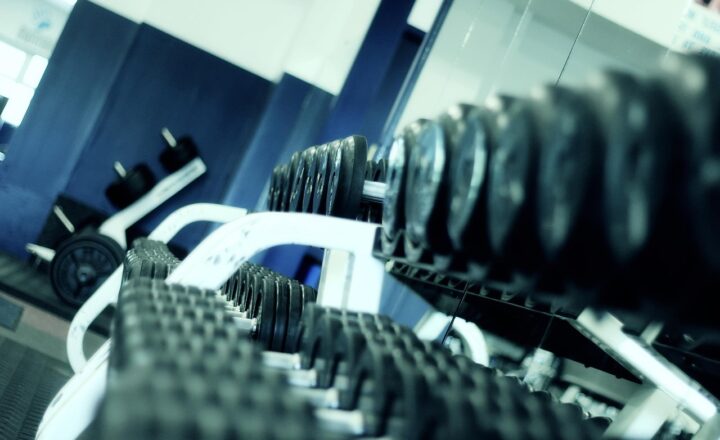How to Improve Your Flexibility and Mobility for Better Athletic Performance
November 13, 2024

Improving flexibility and mobility is essential for athletes looking to enhance their performance and reduce the risk of injuries. While many people associate flexibility with simply being able to touch their toes, it encompasses much more. Flexibility and mobility are crucial for optimal movement patterns, making them key components in any athletic training regimen. In this article, we’ll explore effective strategies to improve your flexibility and mobility, ultimately leading to improved athletic performance.
1. Understanding Flexibility and Mobility
Many people use the terms flexibility and mobility interchangeably, but they have distinct meanings. Flexibility refers to the ability of a muscle or group of muscles to lengthen passively through a range of motion. Mobility, on the other hand, involves the ability to actively move a joint through its full range of motion, which requires both strength and flexibility.
Improving flexibility and mobility can help athletes achieve the following:
- Enhance performance metrics like speed, strength, and endurance.
- Prevent injuries by allowing joints and muscles to function correctly under stress.
- Improve recovery times by enhancing blood flow and nutrient delivery to tissues.
2. Importance of Warm-Up and Cool-Down
Warming up before any athletic activity is crucial for preparing the body for movement. A proper warm-up increases blood flow to the muscles, raises body temperature, and improves mobility. Start with dynamic stretches and movements specific to your sport to prepare your joints and muscles.
Dynamic Warm-Up Routine:
– Leg Swings: Stand on one leg and swing the opposite leg forward and backward for 10 reps; repeat on the other side.
– Arm Circles: Make large circles with both arms to loosen the shoulder joints.
– Lunges with a Twist: Step forward into a lunge and twist your torso toward the leading leg, promoting hip and spine mobility.
Cooling down after a workout is equally important as it aids in recovery and flexibility. Incorporating static stretches into your cool-down routine can significantly enhance flexibility. Static stretching helps lengthen muscles and improve overall flexibility.
3. Incorporating Stretching Techniques
Stretching is one of the most effective ways to improve flexibility and mobility. Here are some techniques to consider:
– Static Stretching: This involves holding a stretch for a set period (usually 15-30 seconds) to increase flexibility. Focus on all major muscle groups, particularly those used in your specific sport.
– Dynamic Stretching: Include movements like leg swings and arm circles in your warm-up to enhance mobility and prepare your body for activity.
– Proprioceptive Neuromuscular Facilitation (PNF): This advanced technique involves stretching and contracting the targeted muscle. Work with a partner or use a wall to assist.
Recommended Stretches:
– Hamstring Stretch: Sit on the floor with your legs extended. Reach toward your toes, holding the position.
– Quadriceps Stretch: Stand and pull one foot toward your buttocks to stretch the front of your thigh.
– Hip Flexor Stretch: Lunge forward with one leg while keeping the other leg straight behind.
4. Utilizing Mobility Exercises
Mobility exercises not only enhance flexibility but also improve joint function and range of motion. Consider integrating the following into your routine:
– Hip Openers: Perform exercises like the pigeon pose and hip circles to maintain hip mobility.
– Thoracic Spine Rotations: Sit on your knees and twist your upper body side to side to enhance spinal mobility.
– Ankle Mobility Drills: Perform calf raises and dorsiflexion movements to improve ankle flexibility.
Integrating these exercises into your training will help maintain and improve joint health, thus enhancing overall athletic performance.
5. Strength Training for Flexibility and Mobility
While stretching is vital, strength training is equally important in improving flexibility and mobility. Building strength in the muscles surrounding joints allows for a greater range of motion without compromising stability. Incorporate the following into your strength training:
– Squats and Deadlifts: These compound movements help improve lower body strength and flexibility.
– Core Exercises: A strong core supports overall body movement and stability, which can enhance flexibility.
– Resistance Band Work: Resistance bands can facilitate stretching and strengthen muscles simultaneously.
6. Consistency is Key
Improving flexibility and mobility takes time and consistency. Consider the following tips for staying consistent:
– Schedule Regular Workouts: Build flexibility and mobility training into your weekly routine.
– Track Your Progress: Keep a journal of your stretches, mobility exercises, and improvements to stay motivated.
– Be Patient: Results will not be immediate; dedication will pay off over time.
Conclusion
Flexibility and mobility play vital roles in athletic performance. Incorporating proper warm-up and cool-down routines, stretching techniques, mobility exercises, strength training, and staying consistent will lead to better performance and reduced risk of injury. Make flexibility and mobility a regular part of your training regimen, and watch your athletic performance soar.
By focusing on these components, not only will athletes enhance their ability to perform but also ensure longevity in their sports pursuits, making it an essential aspect of any well-rounded training program.








